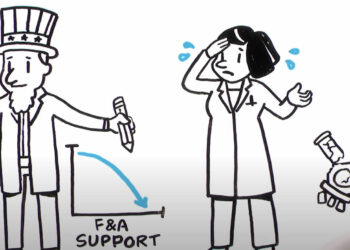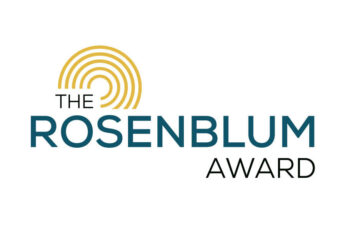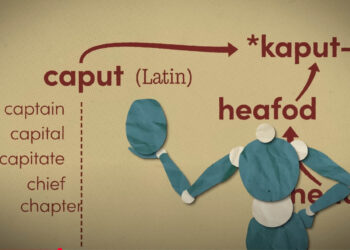Something warm for your Friday as we ease into Spring (some of us slower than others). The Folio Society’s Stan Lane explains the joys of Letterpress printing, the human aspect and the pleasure of craftsmanship:
Feeling print in paper…you know somebody’s actually been there.
Discussion
9 Thoughts on "The Art of Letterpress"
Thank you for that. My late father was a typesetter. We shared a bond over type, typefaces, composition and printing. This brought back fond memories.
I had the privilege and pleasure of working for 22 years at Princeton University Press, which was the last university press in the US to own and operate its own printing plant, so I was able to observe this process at first hand and marveled at the skills of the compositors and pressmen (no women doing that work in those days, though they were proofreaders). For anyone interested in the era when printing was still done in the traditional way and the photocopy machine was a new invention, please read my brief history of scholarly publishing here: https://scholarsphere.psu.edu/files/5712mg51h#.VQxQUGTF9q4
What a wonderful way to end the week! Thank you.
If you enjoyed this post, I recommend checking out Chandler O’Leary, a young artist and printer who is among those helping to keep the craft of letterpress alive. http://chandleroleary.com/work/risd-xyz/
Thank you so much! I cannot explain how this made me so happy and sad all at once. It reminded me how much I love books and reading, and made me appreciate the physical book – apart from its contents – as a work of art itself.
BRAVO… David Crotty on your joyful letterpress presentation—nicely done.
My grandfather, Ralph E. Harnish, was a long-time letterpress “pressman”—as opposed to an offset “operator.” Pappy passed away in the 1970s, but I can still hear him saying, “It ain’t printed until the ink on the type fonts is kissed onto the paper.” He’d point out that offset “duplicating” only smears ink on the paper. One could say the romance is gone with the loss of pressing lead.
Pappy’s brother, Benjamin Franklin Harnish, operated a “print shop” or “job shop” printing all kinds of short letterpress jobs such as business cards, tickets, letterheads, booklets, etc. I remember Saturday mornings as a young child when Pappy would take me to visit Ben’s print shop to help out. For too many hours I’d stand in front of the “devil’s bin” sorting type—sorting “ding-bats,” “do-dads,” and “do-hickeys” were easy. Ben would give me a Ben Franklin half-dollar. In my teenage years I’d learn the engraving magic of “dragon’s blood.”
One of the “flat-bed” proof-presses in Ben’s shop came from Ben Franklin’s Philadelphis print shop.
Pappy worked commercial printing company. His press was an old but well maintained sheet-fed Heidelberg letterpress. Some times while I visited Pappy at work I’d get to see how masterfully he could load the press with a fresh skid of paper.
Pappy briefly branded me a traitor in the mid-1960s. During the summer between my junior and senior year of college, I worked for a commercial offset printer to learn the production procedures to prepare camera ready artwork to be printed offset. He eventually forgave me for my defection to offset.
In 1999 I accepted a position with one of the more innovative digital publishers. I could almost hear Pappy moaning from the great beyond, “Johnny, say it isn’t so…” But it was, and I was totally amazed when I watched a high-speed digital printer produce a 300 page book in just about a minute. Print-On-Demand was an affordable reality.
It was like a time-warp hearing offset operators harping about digital printers smearing toner on paper—it ain’t printing unless the blanket offsets the inked image onto the paper!!!
Since my retirement in 2011 I’ve been writing and publishing ebooks. Pappy would cringe into dust at the mere thought of paperless books digitally printed with electronic “ink.” The times are surely changing. Thanks David for a befitting remembrance of letterpress printing that prevailed for about siz centuries.
Enjoy often… John
First, there are a number of organizations committed to such printing. Among them, here in Minneapolis, The Minnesota Center for Book Art, http://www.mnbookarts.org/
Second, Columbia University just allowed as a thesis what is described as a comic book, Unflattening. HUP is issuing this as an academic publisher, in much the same manner as any academic work. The question is whether HUP went astray in not understanding that the content and how it is presented is, in total, the work, from type face to choice of paper, cover and binding, and, of course, how it is produced.
Given the increasing capabilities of the Internet, even in the prosaic area of STM, perhaps some thought might be given to how scholarly publications might effectively engage with the full capabilities of the media.
Two projects inspired by then Princeton history professor Robert Darnton (who is now librarian at Harvard) and funded by the Mellon Foundation did just that for monographs: Gutenberg-e (for revised dissertations) and the ACLS History (late renamed Humanities) Ebook Project (for works by senior scholars. I give a brief history of the former project here: https://scholarsphere.psu.edu/files/9880vr53k#.VQ3dmzTF9q4



